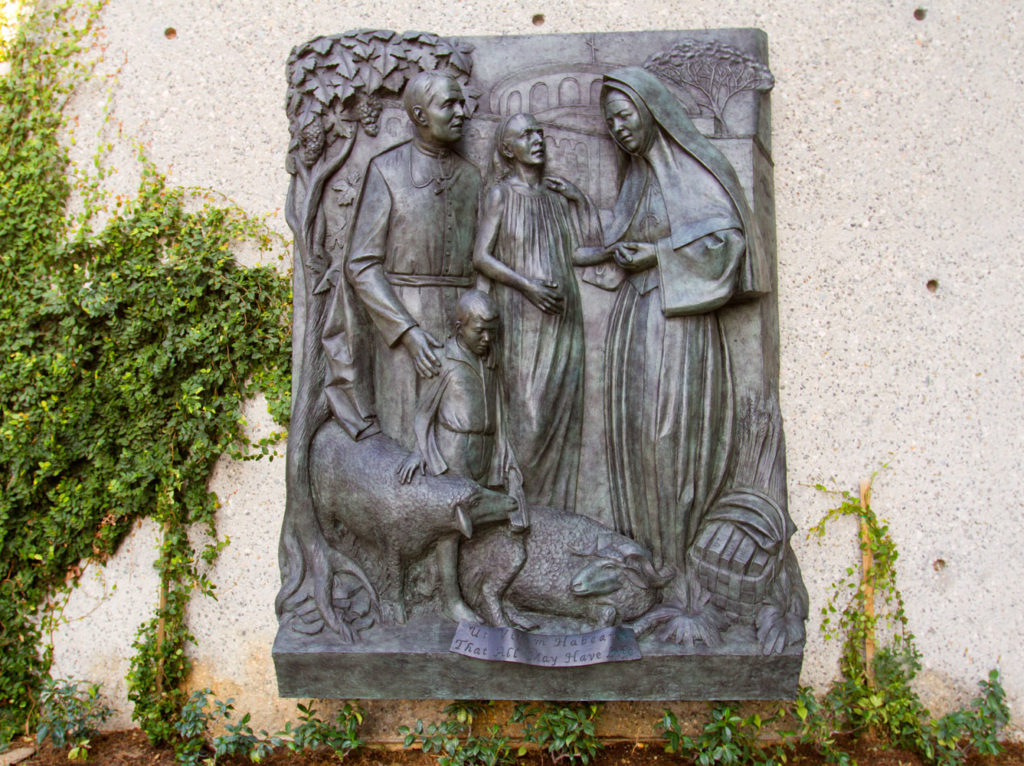
Universities are considered places of texts and stories, but a foundational story was told in bronze this past week.
A sculpture symbolizing the mission of the Religious of the Sacred Heart of Mary was unveiled Nov. 13 at the Marymount Institute for Faith, Culture and the Arts. Located in a small garden outside the institute’s offices in University Hall, the piece, by Will Pupa, depicts Father Jean Gailhac, Mother St. Jean, a woman in need and a boy. About 100 people were present — faculty, staff, alumni, sisters, including sisters of R.S.H.M. community, and members of the Marians and Gryphon Circle, two LMU service organizations made up of women students.
Gailhac was a priest serving a hospital in Béziers, France, who began to help prostitutes after he saw their suffering and need for assistance. He had befriended Eugene and Appollonie Cure, who took an interest in his work. When Eugene died, Appollonie told Gailhac that she wished to devote herself to the work, and she offered her resources for the effort. Together, they and four women founded a community in 1849 that became the Religious of the Sacred Heart of Mary, under the credo “That all may have life.” Appollonie became the community’s first mother superior, Mother St. Jean.
Pupa worked for several years on the project, spending time in research and conversations, particularly with Frances Gussenhoven, R.S.H.M., assistant director of the Center for Ignatian Spirituality and professor emerita of English. He placed an impoverished woman in the sculpture as a symbol of the service that was at the heart of the community’s founding, and a boy because the sisters also started an orphanage to care for the needs of children. In a corner of the work are books in a basket. That the nuns decided not only to feed, house and clothe prostitutes but also educate them, so they could leave that life behind, was a radical act at the time, Pupa said.
For the artist, a gratifying part of the day came in the comments especially from sisters who were present. Pupa included in the background of his work the top of the orphanage in France. No one referred to the building or pointed it out in the sculpture during the unveiling, but many of the nuns remarked to him during the reception that they recognized it.
A few days later, I asked Theresia de Vroom, director of the Marymount Institute and professor of English, why the sculpture is important to her. “You remember that in earlier times, people learned the Bible through pictures and art,” she said. “I wanted to have a bronze piece that told the story of the R.S.H.M.’s founding. And I asked the Marians and Gryphons to be here, too, because they’ll be the carriers of the story.”
It struck me as especially poignant that both women in the service orgs and the nuns were present. The story in the bronze is a story of service. That’s a story the women religious live every day, and that our students are learning.
“That All May Have Life” is by Will Pupa, artist in residence at the Marymount Institute for Faith, Culture and the Arts. The Marymount Institute is located in University Hall Suite 3000.
